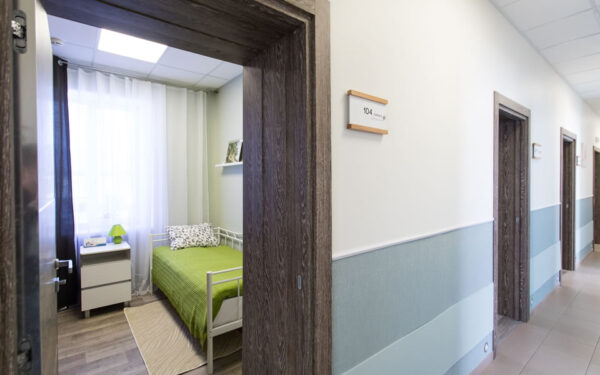CMS Overhauls its Medicare Home Health Reimbursement

In the November 8, 2019, Federal Register, the Centers for Medicare and Medicaid Services (CMS) overhauled its reimbursement policies for home health agencies, with the finalization of the much-anticipated Patient Driven Groupings Model, or PDGM. Effective January 1, 2020, PDGM will create many changes in the way payment is determined, the length of episode, and timing of payments. This will be the most significant change to home health reimbursement in a generation, since the change to the prospective payment system (PPS) in 2000.
Currently, Medicare uses a 153-category case-mix classification system to reimburse agencies, occurring on a 60-day per-patient episodic basis, with therapy service thresholds and add-ons for non-routine supplies. PDGM will rely more heavily on patient characteristics and other information to determine payment categories, and it removes the therapy thresholds.
Under PDGM, the number of unique case-mix categories will expand to 432, and the categories will include non-routine supplies. PDGM will also shrink the length of an episode from 60 days to 30 days. Under PDGM, the main determinants of payment will be: admission source and timing, clinical grouping, functional impairment level, and comorbidity adjustment. Patient eligibility for the Medicare home health benefit remains the same under PDGM. Patients must still be confined to the home, be under the care of a physician, receiving services under a plan of care established and periodically reviewed by a physician, and be in need of intermittent skilled nursing or therapy services.
Admission Source and Timing
Each episode will be grouped, based on the admission source, as either community or institutional. Patients with an in-patient acute care hospitalization, in-patient psychiatric facility stay, skilled nursing facility stay, in-patient rehabilitation facility stay, or long-term care hospital stay within 14 days of the home health admission are designated as institutional admissions. Admissions not meeting this criteria are classified as community admissions. Second and subsequent episodes in a series of episodes are classified as community unless there is another institutional stay and the 14-day criteria are met again.
Under PDGM, episodes are classified as either early or late. The first 30-day episode will be classified as early, and all subsequent 30-day episodes will be classified as late. Episodes are not be considered early again until there has been a 60-day gap between the end of one episode and the start of another. Admission source and timing will be determined based on claims in the Medicare system.
In general, early admissions are reimbursed at a higher amount than late, and institutional admissions are more highly reimbursed than community admissions. The reimbursement per admission source and timing may benefit hospital and facility-based home health agencies that tend to have more early admissions directly from institutions.
Clinical Grouping
Under PDGM, patients are grouped into one of 12 different clinical categories based on the principal diagnosis reported on the claim. CMS states that the principal diagnosis should be the diagnosis chiefly responsible for home health services. Codes for symptoms, signs, and ill-defined conditions used as principal diagnoses will not group the patient into a payment category. Agencies will need to self-educate on coding for the PDGM clinical categories and episodes, to ensure the correct principal diagnosis has been determined in order to receive proper reimbursement.
Functional Impairment Level
Each patient will be grouped into a functional impairment level of Low, Medium, or High based on information from the outcomes and assessment information set (OASIS). Responses to OASIS items such as risk for hospitalization, grooming, dressing, bathing, transferring, and ambulation are assigned points. The sum of the points results in the functional impairment level score.
Comorbidity Adjustment
Each episode will have a comorbidity adjustment category based on the presence of certain secondary diagnoses reported on the claim. CMS has prepared a list of secondary diagnoses which, when present by themselves or in certain combinations with other diagnoses codes, will group the patient into either a High Interaction comorbidity adjustment, Low single comorbidity adjustment, or No comorbidity adjustment. The combination of admission source and timing, clinical grouping, functional impairment level, and comorbidity adjustment determines in which of the 432 case-mix adjusted reimbursement categories the patient will be classified.
Low Utilization Payment Adjustments
Under current PPS, each 60-day episode has a minimum visit threshold of four. If four or fewer visits are performed during the episode, each visit is reimbursed at the per-visit rate amount. If five or more visits are performed during the episode, then the full episode amount is reimbursed. Under PDGM, there will be a unique threshold of 2-6 visits for each one of the 432 case-mix adjusted 30-day reimbursement categories. The initial visit add-on adjustment for skilled nursing, physical therapy, and speech therapy will continue under PDGM.
Transitioning to PDGM
Episodes that begin in calendar year 2019 and end in calendar year 2020 will be reimbursed based on the current 60-day episode basis, using the current 153 case-mix indices. The national standard rate for these episodes will be updated for 2020. Episodes that begin in calendar year 2020 will be reimbursed on a 30-day episode rate using the new 432 case-mix groupings.
Request for Anticipated Payment (RAPs)
With current PPS, providers submit RAPs after the start of care and are paid 60% of the 60-day episode payment up front; the remaining 40% is paid after the final claim submission. For the second and subsequent episodes, RAPs are paid in 50% installment. Beginning January 1, 2020, for new providers certified after January 1, 2019, no payment will be made with RAPs, and providers will be required to submit no-pay RAPs. For providers certified prior to January 1, 2019, RAPs will be paid at 20% of the 30-day episode amount up front, and the remaining 80% after final claim submission.
For example, if an agency was certified in 2018 or earlier, and in 2019 a 60-day episode amount is reimbursed at $4,000, the agency may currently expect to receive $2,400 with the RAP. Beginning in January 2020, when a similar RAP is submitted, if the 30-day episode rate is $2,000, the agency may only receive 20% of $2,000 or $400. The decrease from $2,000 to $400 in upfront reimbursement for each patient may result in cash flow shortages for some agencies. Agencies should maintain adequate working capital to prepare for the transition.
Beginning in 2021, payments will no longer be made with RAPs for any agencies, regardless of certification date. All agencies will be required to submit no-pay RAPs; however, the RAPs will require less information. The no-pay RAPs will be required to be submitted within five calendar days from the start-of-care date. A late submission penalty equal to 1/30 of the episode rate will be assessed for each day following start-of-care. For example, if the RAP is submitted on the sixth day after the start of care, it will be considered six days late. The penalty will be 6/30 of the episode payment, equivalent to a 20% reduction in reimbursement. CMS may waive the penalty in exceptional circumstances. RAPs are required to be submitted so that CMS can update its consolidated billing edits.
In 2022, RAPs will be discontinued and replaced with a Notice of Admission (NOA). The NOA will need to be submitted within five days of the start of care, or the same penalty as described above will be assessed. Many agencies are submitting RAPs up to two weeks after the start of care. To avoid penalties, agencies will need to develop processes to reduce their submission times to five days or less.
For calendar year 2020, an estimated $250 million increase in payments to agencies is expected. The method by which reimbursement rates are calculated has not changed. A national standard episode amount is case-mix adjusted and then wage-index adjusted for different geographical area differences. The discipline per-visit rates are also still wage-index adjusted. The national 30-day standard rate before case-mix and wage index adjustments for 2020 will be $1,864.03, which includes an annual 1.5% payment increase and also a provider behavioral adjustment factor decrease of 4.36%. The behavioral adjustment decrease is not applied to the per-visit rates. CMS assumes providers will change the methods they use for principal diagnosis coding and comorbidity coding, and will provide extra visits to avoid LUPA payment. The 4.36% adjustment in the final rule is a decrease from the 8.39% in the proposed rule.
Other items of note in the final rule are the adjustments for partial episode payments, which will remain under PDGM, as will outliers, with a fixed dollar loss ratio changed to 0.56 for 30-day episodes in 2020. Decreases in rural add-on adjustments will also continue on schedule. Other changes in the final rule include the home infusion therapy benefit, quality measures, and the home health value-based purchasing demonstration program.
Home health agencies should be preparing for the biggest changes to occur in nearly two decades. Accurate OASIS assessments and coding will be important in order to receive proper reimbursement. Changes to billing processes will be needed to adapt to a 30-day billing cycle and shorter RAP submission times. Agencies will need to make these changes while also trying to build up working capital for potential delayed cash flow. Marcum’s Healthcare Industry webpage has home health rate calculation tools and other resources available to the home health industry.





